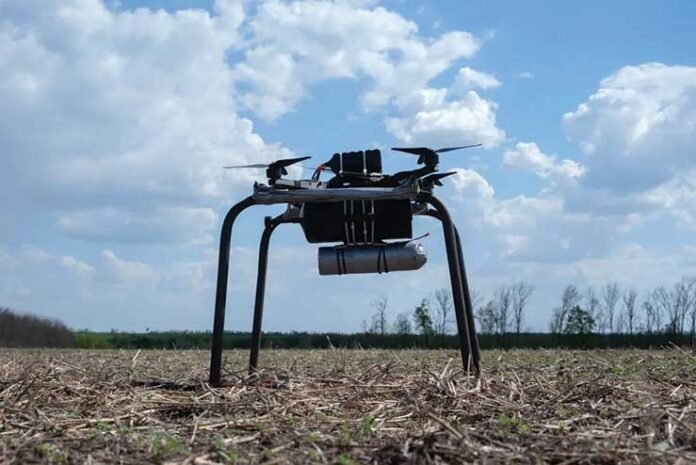In the dynamic landscape of contemporary warfare, Unmanned Aerial Vehicles (UAVs), commonly referred to as drones, have transitioned from auxiliary support platforms to core components of modern military operations. Technically defined as aircraft systems operated without a human pilot onboard, UAVs integrate avionics, propulsion, communications, and mission-specific payloads (electro-optical, infrared, EW modules, loitering munitions, etc.) into a remotely piloted or autonomous system capable of executing precision operations in contested and denied environments. Their ability to provide real-time Intelligence, Surveillance, and Reconnaissance (ISR), perform kinetic strikes, conduct electronic warfare, and support logistics in high-risk zones has significantly redefined force projection and tactical engagement doctrines.
Drone warfare encompasses the systematic use of Drones to execute offensive, defensive, and support missions within a theatre of operations. Unlike traditional manned platforms, UAVs offer persistent situational awareness, reduced reaction cycles, and precision engagement with minimised risk to personnel. This form of warfare, while initially perceived as asymmetric or unconventional, has now institutionalised itself as a mainstream operational modality in both regular and hybrid conflict scenarios. The increasing reliance on unmanned systems by state and non-state actors alike, reflects a broader doctrinal shift toward network-centric, unmanned, and autonomous combat systems.
The Rise of Drone Technology in Warfare
The rapid evolution of drone platforms has transformed them from simple reconnaissance tools into multi-role, mission-critical systems capable of executing complex operations across land, sea, and air. Today’s drones are modular, scalable, and central to modern military strategy. Ranging from hand-launched nano drones for urban surveillance to large HALE (High Altitude Long Endurance) systems that loiter for over 40 hours, drones now offer persistent ISR and precision strike capabilities. A key enabler of this transformation is AI-driven autonomy. Equipped with inertial navigation systems (INS), Global Navigation Satellite System (GNSS), and visual-inertial odometry, modern UAVs can operate in GPS-denied environments. Onboard AI allows real-time object detection, terrain-aware navigation, autonomous routing, and swarm coordination via mesh network protocols, enhancing responsiveness in fluid combat scenarios.
Payload versatility is another core strength of drones. Surveillance drones use EO/IR sensors and Synthetic Aperture Radar (SAR) for all-weather intelligence gathering, while electronic warfare variants deploy jammers and spoofers. Armed UAVs carry loitering munitions, laser-guided weapons, and kinetic payloads. India’s ALFA-S, for example, is a loitering munition capable of autonomous target engagement. UAVs can also be configured for CBRN detection, supporting operations in high-risk environments. Advanced communication systems, including SATCOM, secure RF links, and 5G modules, ensure robust command and control. Software-defined radios (SDRs) and Frequency-Hopping Spread Spectrum (FHSS) protocols provide resistance to jamming. Integrated with C4ISR networks, drones enable rapid intelligence dissemination and decision-making.
Drone warfare encompasses the systematic use of Drones to execute offensive, defensive, and support missions within a theatre of operations. Unlike traditional manned platforms, UAVs offer persistent situational awareness, reduced reaction cycles, and precision engagement with minimised risk to personnel
From a systems engineering perspective, drones benefit from innovations in propulsion, ranging from brushless DC motors in micro drones to turboprop and hybrid-electric systems in HALE platforms. Modular batteries and automated recharging enhance endurance and field utility. Cost-effective, agile, and survivable, drones have become indispensable to future warfare. For India, this shift presents a strategic opportunity to build a self-reliant, autonomous, and future-ready UAV ecosystem.
Global Use Cases: From Surveillance to Strikes
Globally, drones have emerged as decisive enablers of modern warfare, offering unmatched versatility across tactical and strategic domains. No longer limited to surveillance, they now support precision strikes, electronic warfare, logistics, and real-time intelligence operations, fundamentally reshaping conflict dynamics. Armed forces worldwide are restructuring their C4ISR frameworks and Rules of Engagement (RoE) to fully integrate UAV-led missions as standard elements of modern combat.
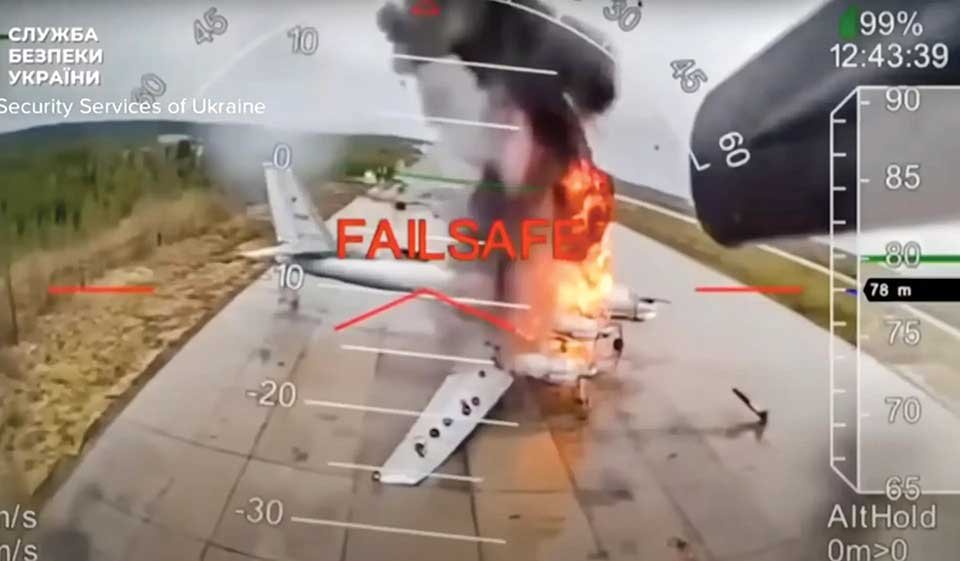
In the 2020 Azerbaijan-Armenia conflict, Bayraktar TB2 drones, equipped with laser-guided MAM-L munitions, played a critical role in disabling Armenian armoured formations and air defences. Azerbaijan also deployed Israeli-made Harop loitering munitions, capable of autonomously targeting radar emissions. This combination of strike and loitering drones allowed Azerbaijan to dominate the battlefield with minimal reliance on manned aircraft, highlighting the cost-effectiveness and impact of networked drone warfare.
The ongoing Russia-Ukraine war provides the most comprehensive example of drone warfare to date. Ukraine’s innovative use of commercial FPV drones, assembled from off-the-shelf parts and modified with explosive payloads, has been notable. These drones, piloted using head-mounted displays, enable precise targeting in trench assaults, urban operations, and vehicle strikes. Ukraine has also experimented with tethered FPV drones via optical fibre, which offer secure, interference-resistant control in GPS- and RF-denied environments. In a major escalation, Ukraine conducted coordinated drone strikes on Russian airbases, damaging strategic bombers like the Tu-22M3 and Tu-95, demonstrating the effectiveness of low-cost asymmetric saturation attacks.
Globally, drones have emerged as decisive enablers of modern warfare, offering unmatched versatility across tactical and strategic domains. No longer limited to surveillance, they now support precision strikes, electronic warfare, logistics, and real-time intelligence operations, fundamentally reshaping conflict dynamics
In the Israel-Hamas conflicts, the Israeli Defence Forces (IDF) deployed a layered drone strategy using Hermes 900 and Skylark UAVs for ISR and fire coordination. Israel also leads in autonomous drone swarm research, working toward systems capable of data-sharing, decentralised navigation, and cooperative engagement.
These global examples signal a shift in military doctrine; drones are no longer peripheral tools but central to operational dominance. As FPV drones, loitering munitions, and AI-enabled swarms evolve, they redefine warfare, blurring the lines between air, cyber, and kinetic domains, with unmanned systems at the forefront of future battlefields.
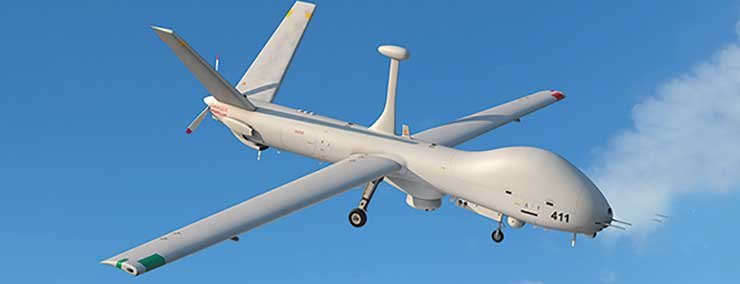
New Warfighting Methods Enabled by Drones
Modern drones have ushered in a fundamental transformation of combat tactics and military doctrines, enabling a new generation of warfighting methods that blend precision, autonomy, and adaptability. Their modularity, low logistical footprint, and ability to operate in both denied and contested environments make them ideal for hybrid warfare, counterinsurgency, and full-spectrum operations. As drone technology converges with AI, 5G communication, and next-generation power systems like fuel cells, five critical domains of military operations are being reshaped:
ISR Dominance
Drones have revolutionised Intelligence, Surveillance, and Reconnaissance (ISR) by providing continuous coverage over high-risk or denied areas without risking human lives. UAVs equipped with EO/IR sensors, synthetic aperture radar (SAR), and multispectral imaging can maintain real-time situational awareness of enemy troop movement, logistics, and infrastructure. The integration of AI-based onboard analytics enables drones to autonomously detect, classify, and track targets, significantly reducing the decision-making loop (OODA cycle).
With the emergence of 5G-enabled data relays, high-bandwidth telemetry and ultra-low latency video transmission are now possible, enabling operators to access HD visuals and sensor feeds from multiple drones in real time, even during deep-penetration missions. Fuel cell-powered HALE drones can loiter for over 24–36 hours, ensuring persistent ISR coverage over vast operational theatres.
Swarm Attacks
Swarm drones, driven by advances in multi-agent AI systems, represent a major leap in autonomous warfare. These systems operate as a decentralised network where each drone shares data with others in the swarm through mesh communication protocols, increasingly using 5G architecture to coordinate attack vectors, dynamically assign roles, or avoid threats. Swarms can execute complex manoeuvres, such as diversion, saturation attacks, or area denial, confusing even the most advanced air defence systems.
The swarm logic is rooted in bio-inspired algorithms, allowing real-time reconfiguration if drones are lost, and autonomous adaptation to changing battlefield scenarios. Swarm attacks can range from soft-kill missions (jamming, disabling radars) to hard-kill engagements using small explosive payloads or loitering munitions, particularly effective in SEAD (Suppression of Enemy Air Defences) operations.
Loitering Munitions
Often referred to as “fire-and-forget” drones, loitering munitions hover over a target area, autonomously seeking enemy assets such as radar installations, missile launchers, or high-value command nodes. These drones are equipped with AI-powered vision systems capable of target recognition and discrimination, sometimes even integrating on-device neural networks to make strike decisions with minimal operator input.
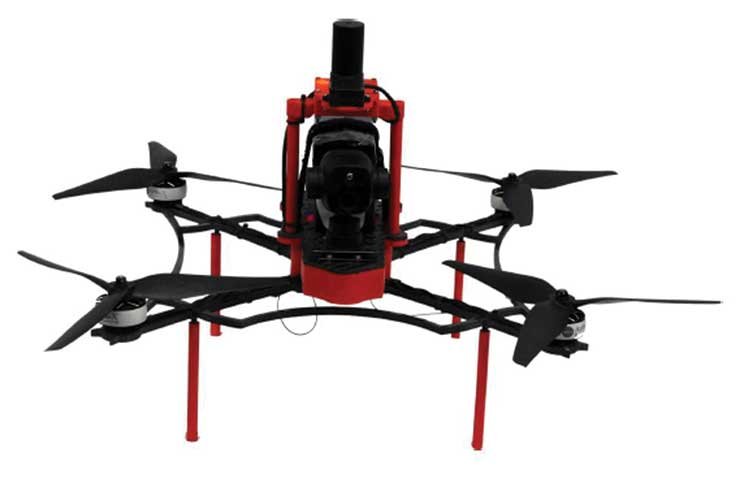
Loitering munitions such as the Switchblade 600, Israel’s Harop, and India’s ALFA-S have redefined precision strike capabilities in modern warfare. Designed to hover in an area of interest before engaging, these systems offer selective targeting with real-time operator control, helping to reduce collateral damage and support ethical engagement protocols. Emerging research is focused on integrating fuel cell propulsion systems into next-generation loitering drones to significantly extend endurance and reduce acoustic and thermal signatures. While most current systems operate on battery or combustion engines with operational ranges between 50 to 1,000 km depending on platform class, future variants may achieve greater loiter times and extended range using hydrogen or methanol fuel cells, marking the next frontier in persistent unmanned precision strike technologies.
Modern drones have ushered in a fundamental transformation of combat tactics and military doctrines, enabling a new generation of warfighting methods that blend precision, autonomy, and adaptability. Their modularity, low logistical footprint, and ability to operate in both denied and contested environments make them ideal for hybrid warfare, counter-insurgency, and full-spectrum operations
Urban Warfare
In dense urban environments where conventional ISR systems face challenges, nano and micro drones offer superior agility, stealth, and manoeuvrability. Deployed by Special Forces for room clearing, hostage reconnaissance, and interior mapping, they use SLAM algorithms for autonomous navigation in GPS- and RF-denied zones. Equipped with low-light cameras, thermal sensors, and encrypted FPV links, these drones often rely on tethered optical fibre or localised 5G nodes for secure, jam-resistant control. Their compact size and low noise profile make them ideal for covert operations, minimising risk to troops and civilians. Despite their size, these are highly specialised systems; integrating AI, miniaturised sensors, and secure communication technologies, however, they are cost-intensive and far from being low-end tools.
Electronic Warfare and SIGINT
Drones are increasingly used for electronic warfare (EW) and signals intelligence (SIGINT). Specialised UAVs can be equipped with directional jammers, RF sniffers, and electromagnetic pulse generators to disrupt enemy communications, navigation systems, and radar installations. AI enables real-time spectral analysis and dynamic threat identification, allowing drones to autonomously prioritise EW targets. With 5G and SDR (Software-Defined Radio) integration, drones can now operate across multiple frequency bands and adapt their jamming or spoofing protocols mid-mission. This capability is crucial in multi-domain operations, where information dominance can be achieved by blinding enemy sensors and disrupting their C4ISR networks.
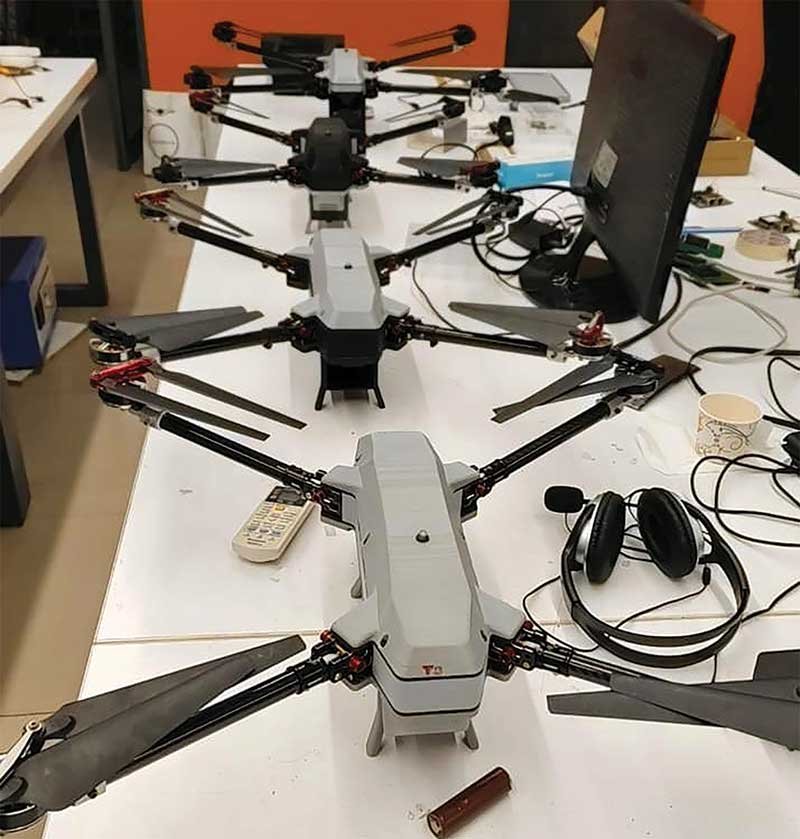
India’s Strategic Drone Posture and Operation Sindoor
Over the past decade, India has adopted a structured, multi-dimensional approach to integrating Unmanned Aerial Systems (UAS) into its defence architecture. Driven by regional threats and global shifts in warfare, drones have emerged as strategic force multipliers. Operation Sindoor, a tri-services joint initiative involving the Army, Navy, and Air Force, marked a significant milestone, providing a real-time testing ground for India’s rapidly expanding drone ecosystem. Focused on reinforcing border security, especially along the LoC and LAC, it reflects a doctrinal shift where drones are not just ISR tools but frontline assets for surveillance, combat support, and autonomous execution.
India is significantly scaling its UAV spectrum by integrating HALE/MALE platforms, tactical loitering munitions, FPV drones, and AI-enabled swarms. Through indigenous innovation and targeted acquisitions, drones are being embedded into multi-domain operational roles.
Under the iDEX initiative and DRDO’s leadership, key indigenous platforms have emerged: Rustom-II (TAPAS BH-201) for long-range ISR, Archer-NG as a next-gen strike drone, and loitering munitions like ALFA-S and ALS-50, showcasing India’s AI-integrated, fire-and-forget capabilities. These efforts support the Aatmanirbhar Bharat vision and enable potential for drone exports.
To bridge capability gaps, India is acquiring 31 MQ-9B Sea Guardian drones from the US, enhancing maritime ISR and precision-strike capabilities. Simultaneously, upgrades to Israel’s Heron TP fleet support tactical strikes and real-time surveillance along hostile frontiers.
On the tactical front, FPV drones and mini-UAVs are being inducted at the unit level for reconnaissance, artillery spotting, and urban surveillance. Some of which also utilise optical fibre tethers, ensuring secure, jam-resistant control in contested EW environments.
India’s AI-driven swarm drone capabilities, first showcased in 2021, are now being deployed in field exercises. These systems enable autonomous decision-making, saturation attacks, and coordinated ISR, with 5G-based battlefield networks being tested to further enhance real-time collaboration.
To counter emerging drone threats, India has invested in anti-UAV systems, laser-based DEWs, RF jammers, mobile interceptors, and drone detection radars, and were deployed at strategic locations under Operation Sindoor. These layered defences ensure readiness in an evolving unmanned battlespace.
Operational Impact: Operation Sindoor has proven to be more than just a border security initiative, it has become India’s first full-spectrum drone integration exercise across all three services. In terrains such as the high-altitude Himalayas, dense northeastern forests, and coastal surveillance zones, drones are providing critical advantages: from persistent situational awareness and real-time decision support to autonomous reconnaissance and strike capabilities without risking soldier’ lives.
Government initiatives such as Make in India, Startup India, and the DPEPP 2020 are fostering UAV innovation through funding, testing infrastructure, and fast-track procurement. DRDO, HAL, BEL, and private players are collaborating to deliver a wide spectrum of systems, from quadcopters to loitering munitions
The operation has also accelerated doctrinal evolution within the Indian Armed Forces, pushing forward the case for a Unified Drone Command, integrated battlefield management systems (IBMS), and AI-enhanced C4ISR integration. Most importantly, it validates India’s vision of building a resilient, indigenised, and scalable drone warfare ecosystem, one that can adapt not just to conventional threats, but also to asymmetric and grey-zone conflicts of the future.
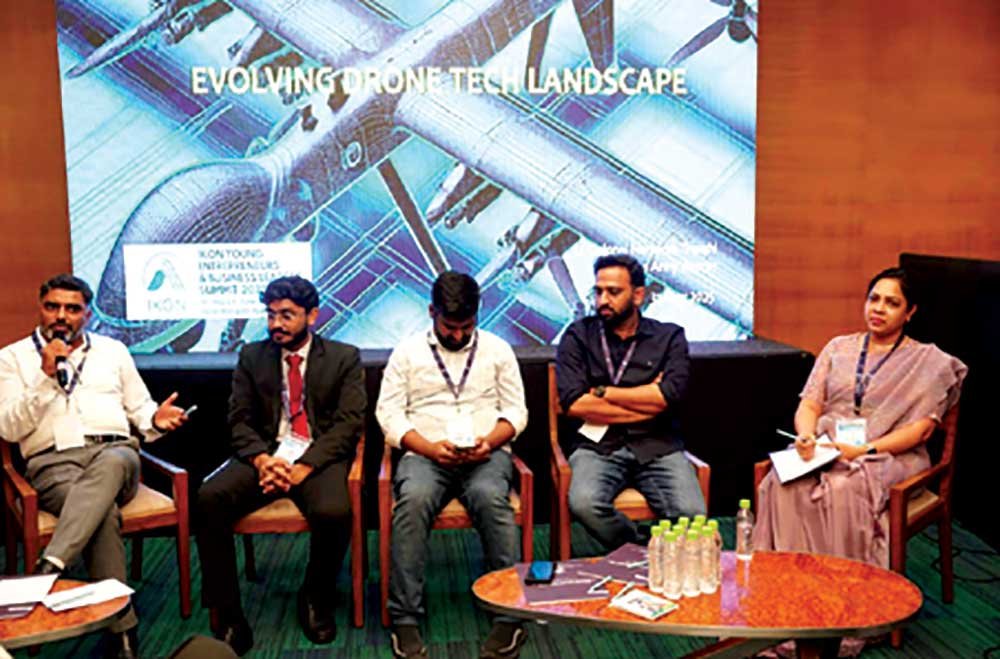
The Road Ahead: Strategic and Tactical Integration
As global military doctrines evolve toward unmanned, network-centric warfare, India is poised to transform its growing drone capability into a full-spectrum strategic advantage. Leveraging operational experience from initiatives like Operation Sindoor, along with accelerated indigenous development, India is crafting a roadmap to emerge as a drone superpower. This transformation spans doctrinal reform, technological innovation, industrial growth, and institutional preparedness.
A key focus area is tri-service integration, enabling a unified command structure for UAV operations across the Army, Navy, and Air Force. Plans include forming dedicated Unmanned Systems Commands within theatre commands. The IAF leads in deploying long-range UAVs like the MQ-9B Sea Guardian, while the Army focuses on tactical ISR and FPV drones, and the Navy enhances maritime surveillance and anti-submarine roles using ship-launched and HALE drones. Secure 5G networks and interoperable data systems are central to this convergence.
Equally critical is the development of an indigenous drone industry ecosystem. Government initiatives such as Make in India, Startup India, and the DPEPP 2020 are fostering UAV innovation through funding, testing infrastructure, and fast-track procurement. DRDO, HAL, BEL, and private players are collaborating to deliver a wide spectrum of systems, from quadcopters to loitering munitions.
India is also advancing AI and cybersecurity integration in UAV operations. AI-driven systems are being developed for autonomous flight, real-time target detection, and swarm logic. Simultaneously, efforts are underway to bolster cyber resilience through quantum-safe encryption, anomaly detection, and jamming-resistant communications.
India’s strategic trajectory in drone warfare reflects a vision where drones are no longer auxiliary assets but central to achieving multi-domain dominance. As AI, 5G, and quantum tech mature, India is set to lead in ethical, scalable, and high-impact unmanned warfare across land, sea, air, and space.
Drone warfare is not just a technological leap; it’s a doctrinal shift. Countries that master this domain will define the future of warfare. For India, the fusion of indigenous innovation, strategic operations like Operation Sindoor, and a clear policy push is paving the way for drone dominance. As the nation transitions from being a drone importer to a drone power, it also contributes to building a robust defence-tech ecosystem ready for the battles of tomorrow.
Built in India. Flown for the Nation. Defending the Future.
–The writer, an Indian Army veteran, is a subject matter expert in military technology in independent capacity. The veteran officer is alumnus of the NDA Pune, IIT Kanpur, and IIM Indore, he brings a holistic and well-rounded perspective to the defence technology domain. The information presented is sourced from open domains. The views expressed are of the writer and do not necessarily reflect that of Raksha Anirveda
–The writer is an SME and independent consultant in military technology. The views expressed are of the writer and do not necessarily reflect the views of Raksha Anirveda

